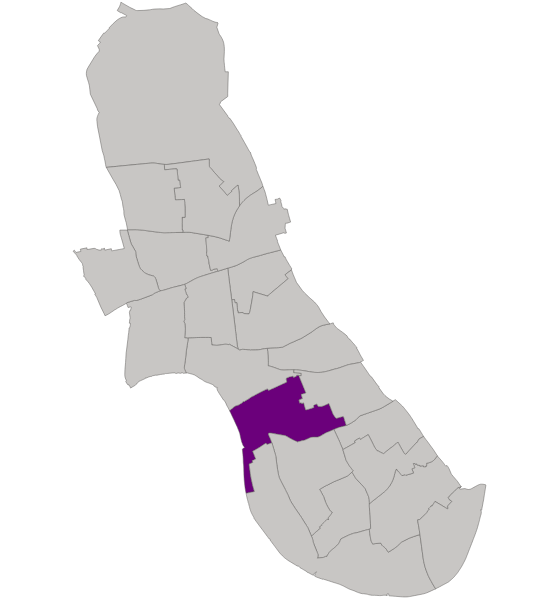The ward profiles bring together a range of demographic and population related data for each ward in Hammersmith & Fulham.
They present key measures that help to define the characteristics of an area, the population it contains and the key issues it faces.
The main themes covered are:
- population
- health
- deprivation
- crime
- education and qualifications
- housing tenure
- economic activity
- local economy and businesses
Ward councillors
- Lucy Richardson (Labour)
- Nikos Souslous (Labour)
- Omid Miri (Labour)
Ward description

Fulham Reach ward is located in the central sub-region of Hammersmith & Fulham.
It is bordered by:
- the river Thames
- Hammersmith Broadway
- Barons Court
- Munster ward.
Charring Cross Hospital, Margravine Cemetery and Normand Park are located within the ward.
The ward is almost entirely residential in character, with most commercial premises situated alongside Fulham Palace Road.
It has the largest population of all wards in H&F, and there has been no large change in population size over the past 10 years.
Over 36% of residents are in private accommodation and around 34% of residents live in property that they own.
The ward is generally affluent area. The overall population is middle-aged and young, single, healthy and skilled. A high proportion of the population work in well-paid professional jobs mainly in professional, scientific and technical activities.
Around 1 in 6 employed residents work in the health sector.
12,167
Population
5,366
Households
Characteristics of the ward
- Higher proportion of working-age people
- Higher proportion employed in professional and technical occupations
- Lower levels of overcrowding
- Lower proportion of family households with children
- Higher house prices
Pockets of deprivation
Even though the ward is relatively affluent, there still exists some deprived areas that suffer from multiple interlinked problems.
This includes:
- Bayonne Road Estate
- Charecroft
- Field Road
- Margravine Estate
Generally, these areas are characterised by:
- low skills
- low incomes
- worklessness
- social rented housing
- health issues
The ward is made up of 7 Lower Super Output Areas (LSOAs). 3 are ranked within the 40% most deprived nationally.
There are 7 deprivation 'domains' within the IMD 2019 and the highest scores for the ward are in:
- living environment
- crime
- barriers to housing and services
Top 5 ethnicities
- White British
- White Other
- Mixed
- Asian
- Black African
Top 5 languages
- English
- Spanish
- French
- Portuguese
- Arabic
Top 5 professions
- Professional occupations
- Associate professional
- Managers and directors
- Caring, leisure and other
- Administrative and secretarial
Top 5 industries
- Professional, scientific and technical
- Health and social work
- Wholesale and retail trade
- Education
- Information and communication